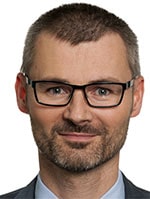IT Service Provider Berlin
34.18 Euro. That’s how expensive the bid for the top position on Google Germany for the search term “IT service provider Berlin” (IT Dienstleister Berlin) is. 34.18 Euro is what a company from Berlin is willing to pay for a click on its ad and a visit to its website. Since about 60% of clicks are on the first link on Google and “IT service provider Berlin” as a term is only searched for 590 times per month, competition for attention and clicks for IT service providers from the German capital is fierce and the price comparatively high.¹
Clicking on this article costs us, t2informatik GmbH, nothing. But I don’t want to go into the differences between paid and organic traffic here. I do not want to discuss the advantages or a reasonable combination of the two types of traffic. And I also do not want to judge whether 34.18 Euro is worthwhile for advertising companies. I would like to focus on the IT service and the intention behind the search query and thus change the perspective: If you enter the search term, what situation are you in, how do companies react to your interest and what is the only logical step to take?
IT service provider Berlin – what does that mean?
Please imagine the following situation: You google “IT Service Provider Berlin”. You know why you are doing this. You know your own situation. Maybe you are 48 years old, head of a department in a larger organisation and need additional development capacity to modernise an existing IT application. Maybe you are 25 years young, have just founded a start-up and are looking for specialists who can develop an app with NativeScript or Flutter. Only you know whether you are looking for an IT service provider who can supply you with a new fibre-optic cable connection or a system house that offers server monitoring in the cloud.
In short: the search query is not unique. If we now take a quick look at “Berlin”, it becomes even more difficult to recognise the exact intention of the search. Should the company be located in Berlin, come from Berlin or provide its services in Berlin? Maybe your organisation is located in Berlin and the service could be partly on site and partly remote? Questions upon questions. But don’t worry: this is the case with every search query. Often the answers to search queries lead to new, more refined searches. IT Service” becomes “IT Service Provider Berlin” or “Software Development Berlin” (costs “only” 7.34 Euro per click) or “Programming Berlin” (costs “only” 2.95 Euro).
IT services of companies
The range of IT services offered by companies in Berlin is naturally enormous. The first hits on Google read as follows:
- IT System House offers free initial consultation for corporate customers, 2 hours response time 24/7, consulting in Dresden, Essen, Cologne, Berlin, Düsseldorf with a fixed contact person and on-site service.
- IT services from professionals with added value, all-round support in daily business and ideal process optimisation.
- IT service at a fixed price and the promise to take care of your technology and to be personal, traceable and always available.
- IT service centre, which as the central IT service provider of the state, is on the side of the Berliners in the Corona crisis.
- Web agency in Berlin, which has been making IT understandable since 1991 and offers IT service & consulting for Windows & Linux as well as support for TYPO3 & Drupal projects.
In addition, some organisations offer UCC and recovery for companies, others offer complete solutions for the challenges of digitalisation, and some offer IT consulting and implementation for administrators.
Maybe you feel the same way about the statements as I do: under one or the other I can imagine something, but with some I am completely unaware of what the company offers – both in general and specifically and concretely for me. And perhaps you are looking for a code review, refactoring, modularisation of applications or an efficient partner for requirements engineering under the guise of IT services?
As I said: the range is wide. And admittedly: it is difficult to answer a search query in only 180 characters, which a Google Ads display allows, or with about 145 characters, which Google displays as information about a web page, especially since the text should fulfil at least three functions:
- To answer the search query (at least in parts).
- To attract attention.
- To animate a click (or not: ideally only if the possible offer matches the possible intention of the query).
Did you notice that none of the texts mentioned says anything about software development or programming? t2informatik offers software development and, at least in my opinion, this is of course an IT service. What is interesting, however, is not my view of these terms, but your intention in the search query. Maybe the results mentioned will lead to another search query from you, maybe to one or two clicks. And what happens then?
The presentation of the IT services
Have you ever heard of Jakob’s Law or the Restorff Effect? Jakob’s Law describes that people transfer experiences, i.e. they expect visually similar products to behave similarly in terms of content and function. The Restorff Effect – also known as the Isolation Effect – predicts that when people see several similar objects, they remember the one that is most different from the others. Why are these two design principles from user experience design interesting at this point? Because it is very likely that you will visit more than one website for the search query “IT service provider Berlin”. You probably expect from websites
- a clear structure,
- simple and comprehensible navigation,
- a compact summary of the service provided by the company,
- a description of details, e.g. of processes, methods, techniques or tools,
- a benefit or advantage argumentation,
- information on possible costs or prices,
- confidence-building information such as references, testimonials, experience reports or success stories,
- background information on the company and
- contact details.
The more sites you look at, the more Jakob’s Law and the Restorff Effect will gain in importance. If most company presentations seem “modern”, you will start to look at “modern” websites – for example with large images, clear writing, animations, downloads, blogs etc. – (Jakob Nielsen sends his regards). But if all visited pages are somehow identical, the one that stands out most will be the one that offers something special and ideally provides the above mentioned information at the same time (Hedwig von Restorff says hello).
The central online problem of IT service providers
What is the biggest online problem that companies and thus all IT service providers in Berlin, Hamburg or Nuremberg have? People are forgetful! They forget which website they have read which information on. As soon as a visitor is busy with another activity for a few minutes or is on the move on another website, he or she will not remember the website, URL or service provider he or she just visited.
Of course you could object: “I am in a concrete selection of a new IT service provider from Berlin, of course I notice and note down suitable companies. That is the reason for my search!” Right, in this case it would be different. In most other cases this is unfortunately not the case from the point of view of the information and service providers. Maybe this leads to the question whether content marketing is worthwhile for companies, but that is a topic for another article (see below). We can do a little test: just come back tomorrow or the day after tomorrow and leave a comment as proof that you have memorised this article. Perhaps I am wrong … 😉
How do companies react to this online problem? And what do many online guides recommend? The answer is: Call-to-Action. Companies are asked to offer downloads or to provide unbeatable offers – ideally highlighted. Somewhat badly formulated: a large button as high up on the website as possible so that you can easily recognise how valuable the company is to you. On the one hand, this is obvious, especially if IT service providers from Berlin have invested 34.18 Euro for your visit. On the other hand, practice shows that most first-time visitors have little interest in such offers. Nobody is willing to transfer a 5 or 6-digit amount to the provider on a first visit to a website just because a button glows a nice red light or a first call lasting 30 minutes is offered free of charge.
And what is the logical step to take to solve this problem?
The only logical step for IT service providers
In my view, the only thing companies can do is to change their perspective. It is not about selling something to you or other visitors. At least not primarily. Not on the first and not on the second visit. Of course companies from Berlin also want to market or sell their IT services. This is clear to all those involved. It just can’t and won’t work from zero to one hundred at the first go. Therefore the only logical step is:
companies must take the perspective of customers. And they must stop thinking in terms of conversions, turnover or sales figures!
At the same time, companies should try to help you remember the company, the service or the website. Of course you don’t have to reveal yourself to the IT service provider the first time you visit a website. You do not have to discuss your situation in an online chat on your first visit. But it is good to know that the service provider is interested in your situation. And perhaps you will soon start a dialogue with one or the other company about your challenges and expectations. That would certainly be an interesting step for all concerned.
What remains is one last question: will you come back tomorrow and leave a comment?
Notes:
Google Ads provides the prices for the keywords and expected average search queries. The query was made on 22.09.2020.
Further UX design principles besides Jakob’s Law or the Restorff effect can be found on our page about User Experience.
Michael Schenkel has published additional posts in the t2informatik Blog, including

Michael Schenkel
Head of Marketing, t2informatik GmbH
Michael Schenkel has a heart for marketing - so it is fitting that he is responsible for marketing at t2informatik. He likes to blog, likes a change of perspective and tries to offer useful information - e.g. here in the blog - at a time when there is a lot of talk about people's decreasing attention span. If you feel like it, arrange to meet him for a coffee and a piece of cake; he will certainly look forward to it!


